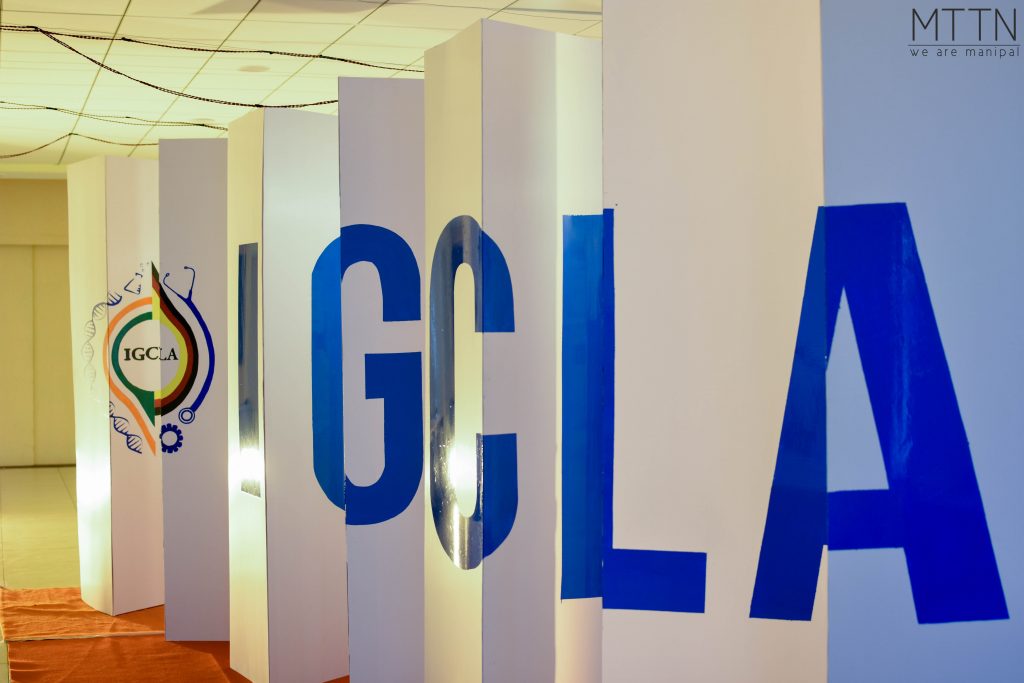
The first talk of day 3 titled – ‘What can machine vision teach us about human vision?’ was presented by Dr Harish Katti. Dr Katti is accomplished in his field with a postdoctoral fellowship at the Vision Lab at the Centre for Neurosciences and a PhD in CSE which includes Multimedia and Vision. To him, studying the brain is like following Alice down the rabbit hole. He took the audience along on his journey to address the science behind something we all take for granted: vision. His talk answered some important questions: can we use computer vision to study human vision? Can we discover perceptual effects in convolutional neural networks (CNN)? Can we use insights from human vision to improve CNN? And last but not least, can we use CNN to model brains?
In order to study human and machine vision, we have to understand brains, deep networks and most importantly realize and accept the bitter truth humans are not perfect. Sure, we do have great vision, but it is not the best as countless surveys and studies have proved time and time again that face recognition algorithms can surpass humans. According to David Marr’s level of analysis, the human brain methodically and simultaneously functions as a computational, algorithmic and implementation machine that never stops.
In his behavioural experiments, he found out that in a normal picture, say a busy street in some city, there are too many variables to consider such as Targets, Non-targets and Context. He learnt that human vision rapidly integrates distinct information channels. Models trained with visual features are informative of human responses. Human object detection is modulated by task-specific as well as task-independent information.
While on his quest for understanding human and machine vision, he came across another question: can deep networks learn better context signals from humans? He tried comparing the human brain and behaviour which showed him that feature extraction takes place in the visual cortex while the decisions took place in the prefrontal cortex.
His results showed that deep networks did indeed surpass us humans in vision only if it was fitted with a human eye. Our human eye has the ability to focus on a single point while erasing out the minute details of nearby objects. Using this principle of the human eye he was able to manipulate the deep networks to omit non-targets and focus only on the target. In this way, machines however advanced and rapid they are, do require a human touch in order to be of some benefit to the human species.
Dr G Arun Kumar, Manipal’s very own head of the Manipal Centre of Virus Research, a microbiologist, virologist and PhD holder was the man who spearheaded the movement to contain the deadly Nipah Virus and is the main reason why the outbreak never turned into an epidemic. In his talk, Catching Nipah, he narrated the events that led to initial suspicion of the virus and how early detection and timely intervention by the laboratories, hospitals and public health services nipped the threat of Nipah in the bud.
The story of the Nipah virus outbreak in Kerala began on 17th May 2018 when Dr Arun Kumar received an evening phone call from a physician in a private healthcare facility in Kozhikode. What struck Dr Arun as unusual was the family history of the patient in question. He was a 28-year-old male displaying a quick onset of encephalitis symptoms who lost a brother the day before to similar symptoms. Several family members were suffering from symptoms to varying degrees. However, the virus claimed the first victim the next evening. Another patient diagnosed two weeks before was traced as the index patient, as it was this super transmitter that spread the infection to nurses and other hospital patients.
The government of Kerala, Karnataka and Maharashtra worked quickly and tirelessly to confirm the presence of the virus and on 20th May the Nipah virus outbreak was officially declared.
The treatment used initially was Ribavirin which caused a 30 per cent decrease in mortality. The mortality rate in Siliguri and Nadia was 100 per cent. Symptomatic contacts were transferred to an isolation facility. People at risk were monitored through phone calls and texts. The key to early detection of Nipah Virus NiV outbreak was good communication between hospital, public health services and laboratory and their remarkable preparedness. The audience was gripped by this insider’s account of the happenings that we heard about in the news during the outbreak.
Dr Vivek Jawali’s reputation precedes him. He is the chief cardiac surgeon at Fortis Hospital. He is also on the board of cardiovascular sciences and the medical council of the hospital. He specializes in HTEA: High Thoracic Epidural Analgesia which has been in use for over two decades. It was introduced without ventilatory assistance or general anaesthesia and was pioneered in 1999 in India. However, its widespread use is highly uncommon, due to the risk of complications such as epidural hematomas.
Prior to 2000, studies focused on the ability of these techniques to attenuate stress response as assessed via a wide variety of mediators in the blood. However, since the year 2000 such studies have more appropriately focused on the ability of these techniques to truly affect clinical outcomes.
Potential benefits of the surgery are improved postoperative analgesia, attenuation of the stress response to surgery and induction of thoracic cardiac sympathectomy. The advantages of such a surgery are numerous due to its improvement of coronary and internal thoracic arterial perfusion, decreased heart rate, and potential reduction of arrhythmias. Intraoperative haemodynamic stability may be improved through stress response modulation and reduced risk of myocardial ischaemia. The high thoracic epidural blockade also causes maximal bronchial dilation. The absence of an endotracheal tube in the trachea avoids all that excess bronchial secretion and ability to cough freely from the beginning will reduce the possibility of lung collapse.
Limitations of awake surgeries are the unprotected airways, problems of pneumothorax, psychological influence of ACAB and gastric distension.
Patients that need such surgeries are the ones suffering from myasthenia gravis, poor pulmonary reserve and renal dysfunction.
Dr Vasudev B Pai, who has worked and trained in London in the top centres of the world and has performed around 1600 cardiac operations with excellent results, is indeed at the forefront of cardiothoracic surgery in India. IGCLA could not have hosted a more qualified professional in his field to conduct a talk on the ideal characteristics required by a surgeon. Dr Pai began by quoting his favourite detective, Hercule Poirot: ‘’The true work, it is done from within. The little grey cells, remember always the little grey cells mon ami.’’ Here is some of the advice he shared with the aspiring surgeons among the audience in his talk, 10 Commandments for a Budding Surgeon:
“The first commandment to follow is to take a leap of faith. Several times young trainees find it hard to cope up with an experienced trainer. But the goal is to learn from the best or not at all. Be well read, because in an ever-changing and ever-evolving field like surgery, keeping up with the latest developments not only makes a doctor’s life easier but a patient’s as well. Next is good ol’ hard work. Dedication and perseverance are what a surgeon needs in order to be a master of his art. The most important yet most ignored rule is technique before speed. Speed in surgery is seen as a sign of superiority and experience. The problem is, technique gets left behind. You see, speed is something that comes with practice. But the wrong technique could claim a patient’s life or your career. Another point is to always maintain your temperament in work settings. Surgery is a vast, rapidly growing competitive field in medicine. Hence, bringing your best game with a touch of patience puts you way ahead of the others. Many times you will be faced with failure in various forms. The challenge, however, is to overcome it. As doctors, rest assured you will be sleep deprived and overworked. But once you get into your scrubs and head to the operation theatre you have to leave your worries at the door. Concentration and compartmentalisation will take you a long way. Patient-centred service and genuine caring is also an absolute requirement to be a good surgeon. Intense years of study give the most returns provided you have the right attitude.”
Dr Vasudev ended on a rather philosophical note by quoting Oscar Wilde: “Education is an admirable thing, but it is well to remember from time to time that nothing that is worth knowing can be taught.”
After a break for tea, Dr Sachin Borkar, consultant and associate professor of Neurosurgery at AIIMS, Delhi, delivered an inspiring talk on neurosurgery and its advancements world over, as well as in India. Dr Sachin began his talk by painting a picture for the audience about neurosurgery in India in the early 1970s – the bleak prospects, the taboos, the high mortality rate and how inauspicious it was for anyone to have considered taking it up. Then came the advent of CT and MRI in the late 80s which heralded a new era in the field of neurosurgery. Modern neurosurgery is based on preserving and augmenting neural function. He touched upon the importance of recent advancements in technology such as neuroimaging, neuronavigation and neuroendoscopy that have exponentially increased the rate of success of neurosurgery. It is possible now to do cortical mapping and craniotomy on a conscious patient. The final aspects of his speech detailed the possibility of artificial intelligence and robotic machinery in the field of neurosurgery. He spoke of a day when surgeons could sit at consoles to control fine precision instruments remotely to perform surgeries with a negligible rate of error or failure. The talk was followed by a panel discussion on career opportunities in neurosurgery and how to take it forward.
The workshops for day 3 commenced in the afternoon. The Biophotonics workshop was part of a symposium on the advance in photonics conducted by the Department of Atomic and Molecular Physics, MIT. The talk highlighted the importance of photonics in biology. It referenced the many integral applications of biophotonics in the various fields of medicine like surgery and ophthalmology. After the lecture, the participants were taken to MIT for a tour of their vast and impressive department of atomic and molecular physics and their advanced laboratory.
The Pharmaceutical Biotechnology workshop was led by Jesil A. Mathew, an assistant professor in the Department of Pharmaceutical Biotechnology, MCOPS. Delegates were introduced to the concept of detection of antimicrobial resistance through a series of hands-on tests after a deft explanation. Delegates were then required to test the resistance of microbes from several cultures using tests such as Agar Disk Diffusion Method which presents a qualitative result, and Microdilution and Agar Gradient Diffusion Method which is a quantitative method. Participants were given a time slot in which they had to successfully carry out the tests. Along the way, they learned about the varying degrees of resistance. Antimicrobial resistance results from the misuse of antimicrobials resulting in the loss of lives and money. It is also a threat to global stability and national security.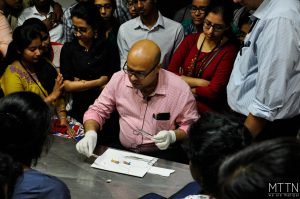
A surge of delegates brimming with curiosity, confidence and an eagerness for competition attended the Vascular Anastomosis workshop. With participants being paired up, it was a race against time to finish stitching an artery and a vein which turned out to be much, much more complex than simple knitting. With emotions running high and heart rates quickening, the delegates competed against each other hoping that the clumsy beginner sutures will hold. Dr Vasudev B Pai calmly corrected the sutures and loose knots and was patient with the to-be surgeons. The workshop perfectly encapsulated the challenges a surgeon faces in the operation theatre. It gave delegates a taste of the pressure faced and the precision required leaving them with a sense of deep satisfaction.
The long day of learning finally drew to a close as the delegates let their hair down and enjoyed themselves at the Gala night, a reward for reaping the day’s fruits.
– Written by Andrea Gonsalves and Rupa Neelakantan
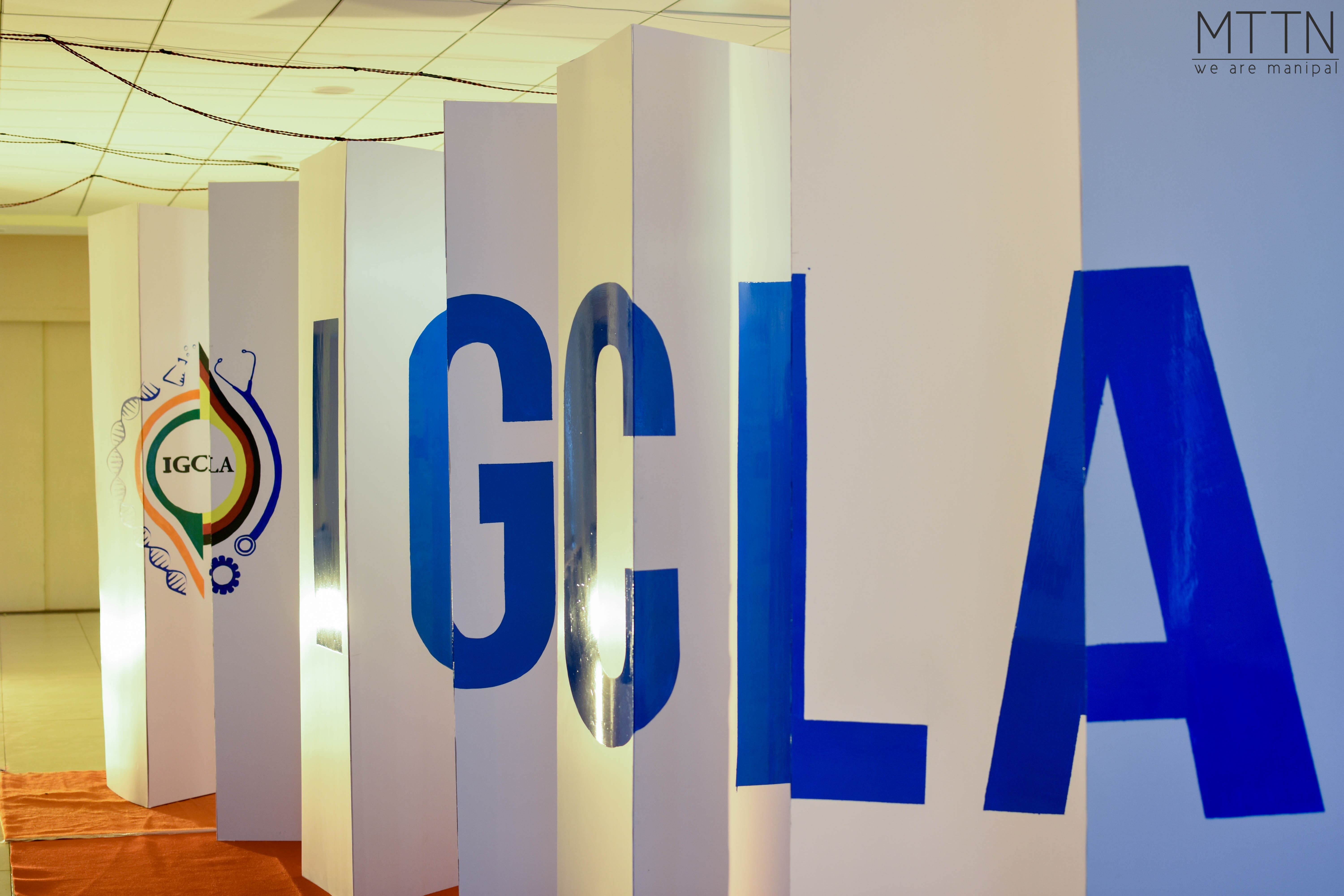
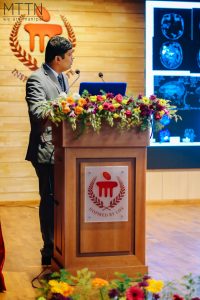
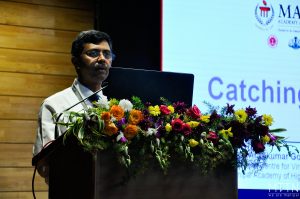
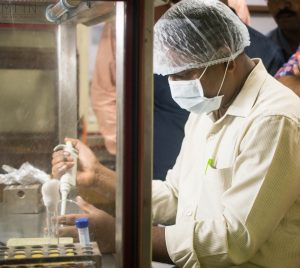
Leave a Reply
You must be logged in to post a comment.